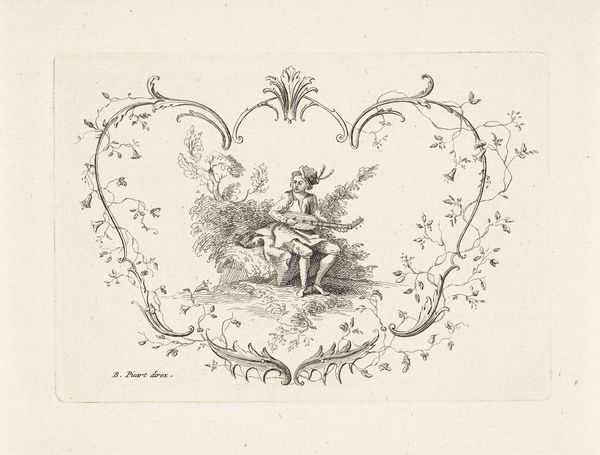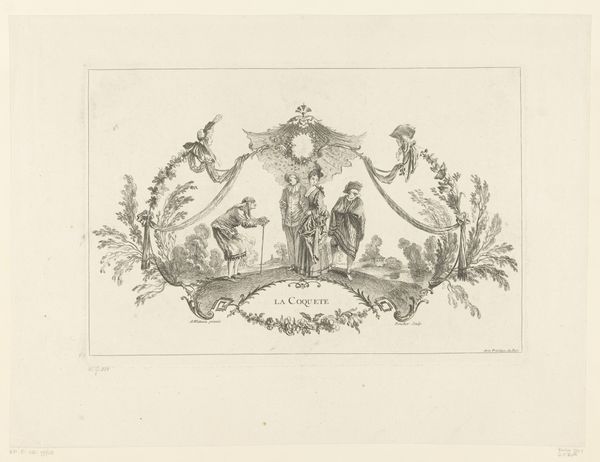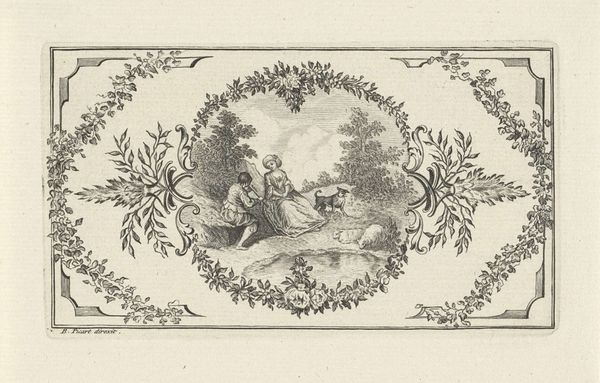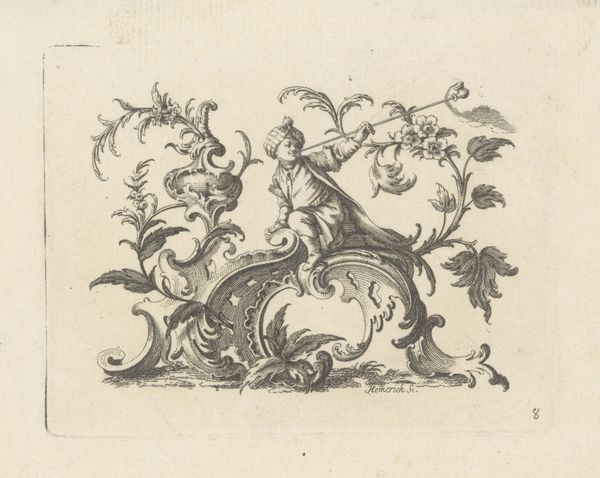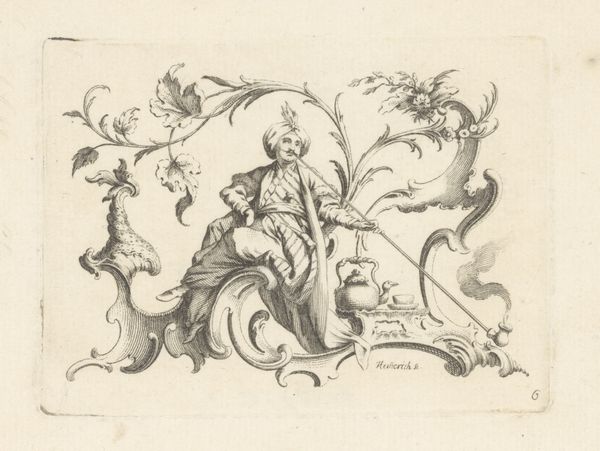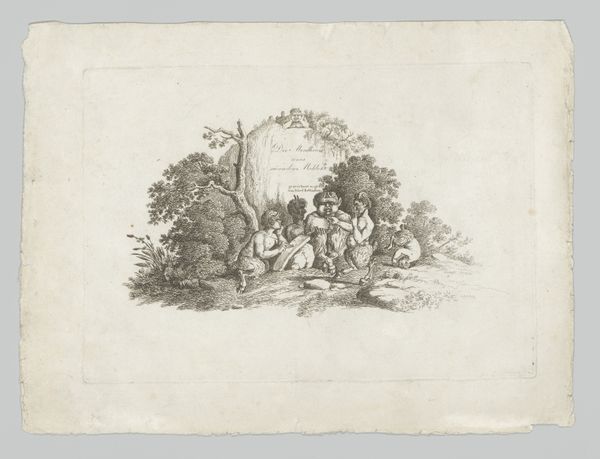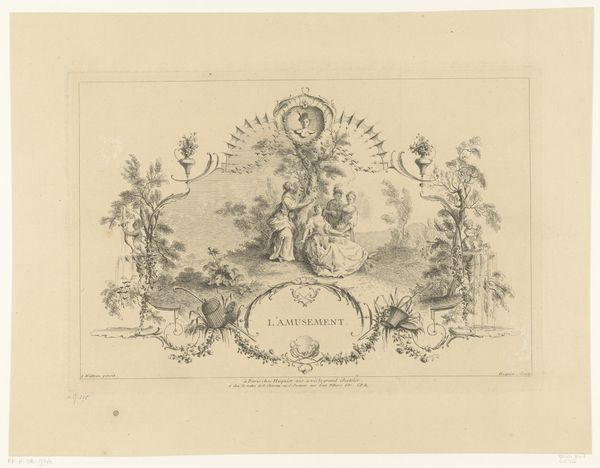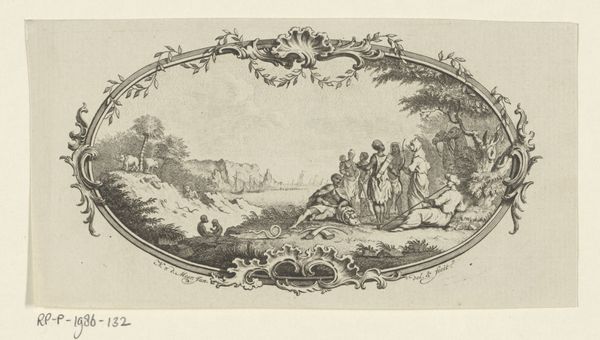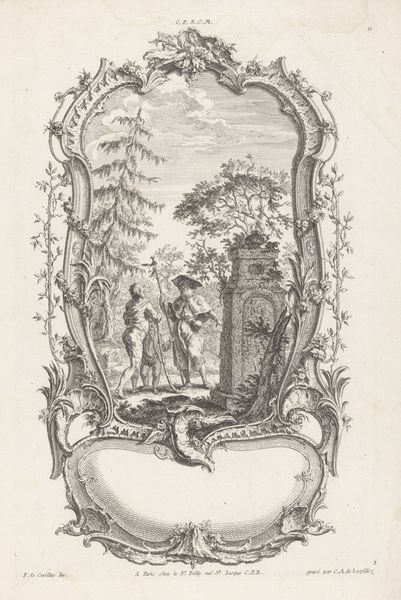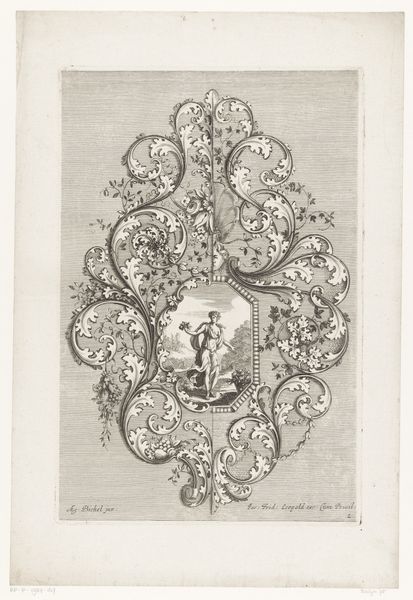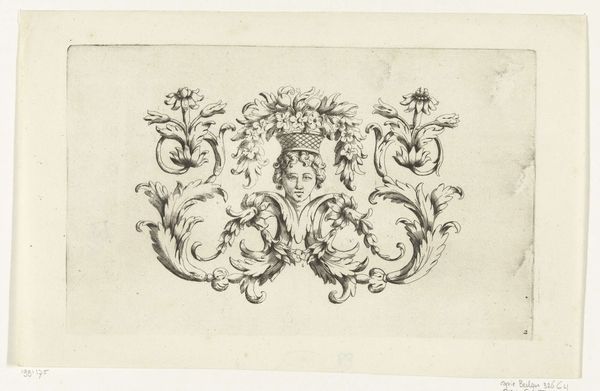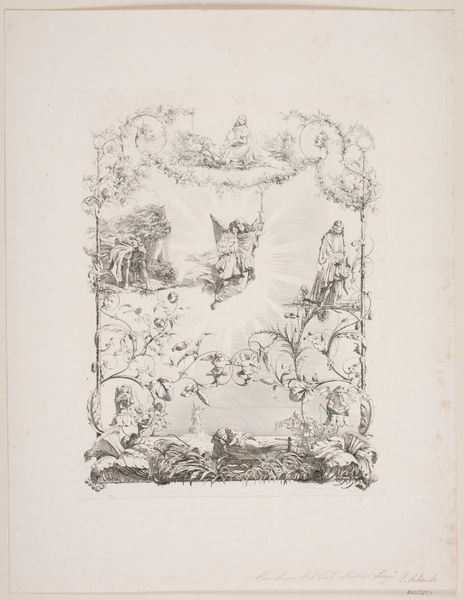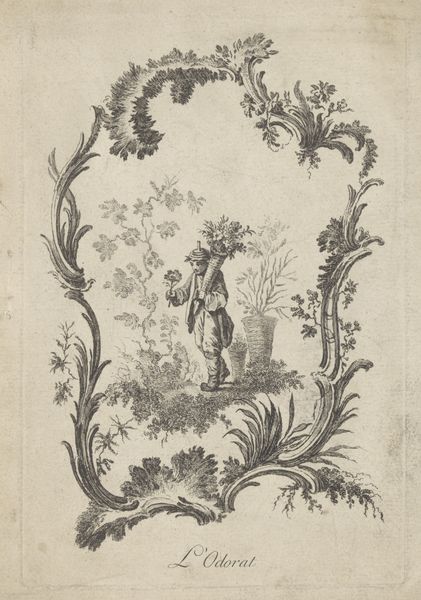
Dimensions: height 78 mm, width 107 mm
Copyright: Rijks Museum: Open Domain
Curator: Ah, I’m immediately drawn to the delicate festivity of this scene. There’s something almost dreamlike about the figure enclosed within that floral border. Editor: Indeed. We’re looking at "Man with Carafe and Glass," an etching and engraving by Bernard Picart, dating sometime between 1683 and 1733. It’s currently held in the Rijksmuseum collection. The Rococo style is clearly evident, especially in that elaborate frame. Curator: That Rococo frame almost feels protective, doesn't it? And look at the man himself, raising his glass and what seems to be a decanter—a gesture of joyful abandon! The glass seems to denote themes of social gatherings and, perhaps, the implied excesses thereof. Editor: I see that festive exuberance reflected in the cultural context. This piece would have likely been produced and consumed within circles that celebrated leisurely pursuits. The placement within the decorative border feels indicative of an ornamental object, designed for a specific elite social setting. Curator: It certainly speaks of privilege. His flamboyant dress is itself a marker of social standing. Though what is the narrative implied in the work? What could be symbolized through the prominent imagery of glass? It does feel like the exuberance suggested might be of temporary effect. Editor: The era’s social rituals certainly inform its purpose. Picart may have intended this print as an emblem of societal sophistication, reflecting its fascination with pleasures but equally hinting at the transience of wealth. It really mirrors a period deeply absorbed with projecting a certain cultivated image. Curator: The very ephemerality of the etching, too, contrasts with its carefully constructed image, echoing your idea about wealth’s fleeting existence and pleasures as temporary escapes from everyday concerns. Editor: And in its afterlife as a museum piece, it stands as a silent but potent commentary on the tastes and concerns of a bygone society—a frozen moment that reflects persistent questions about the role and representation of pleasure. Curator: Yes, leaving us to contemplate, still, our relationship to celebration. It is more than meets the eye. Editor: Exactly. In studying historical artworks, we continue deciphering visual cues, adding nuances that transform our understanding.
Comments
No comments
Be the first to comment and join the conversation on the ultimate creative platform.
